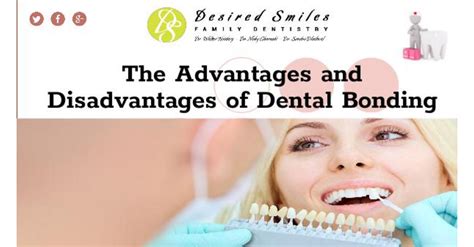Dental Bonding Disadvantages

Dental bonding is a popular cosmetic dentistry procedure used to repair and improve the appearance of teeth. It involves the application of a tooth-colored resin material to the tooth, which is then shaped and polished to match the surrounding teeth. While dental bonding has several advantages, including being a quick and relatively inexpensive procedure, it also has some significant disadvantages.
One of the main disadvantages of dental bonding is its durability. The resin material used in bonding is not as strong as other dental materials, such as porcelain or ceramic, and can chip or crack over time. This means that bonded teeth may need to be repaired or replaced more frequently than other types of dental restorations. Additionally, the bonding material can stain or discolor over time, which can affect the appearance of the tooth.
Another disadvantage of dental bonding is its limited ability to correct major dental problems. While bonding can be used to repair small chips or cracks in teeth, it is not suitable for larger repairs or for teeth that are severely damaged. In these cases, more extensive procedures such as crowns or veneers may be necessary.
Dental bonding also requires a high level of skill and technique to perform successfully. If the bonding procedure is not done correctly, it can lead to a number of problems, including uneven edges, misshapen teeth, and inadequate bonding. This can result in a tooth that is not only aesthetically unpleasing but also potentially damaging to the surrounding teeth and gums.
Furthermore, dental bonding is not suitable for all patients. For example, patients with teeth that are severely decayed or damaged may not be good candidates for bonding, as the procedure may not provide sufficient support or protection for the tooth. Similarly, patients with gum disease or other periodontal problems may need to have these conditions treated before they can undergo dental bonding.
In addition to these disadvantages, dental bonding can also be sensitive to certain foods and drinks. For example, patients who consume a lot of coffee, tea, or red wine may find that their bonded teeth become stained or discolored over time. Similarly, patients who eat a lot of sugary or acidic foods may be more prone to tooth decay or other dental problems that can affect the bonding material.
Despite these disadvantages, dental bonding remains a popular and effective cosmetic dentistry procedure for many patients. With proper care and maintenance, bonded teeth can last for many years and provide a natural, healthy appearance. However, patients should be aware of the potential disadvantages of dental bonding and discuss their individual needs and concerns with their dentist before undergoing the procedure.
In conclusion, while dental bonding has several advantages, it also has some significant disadvantages that patients should be aware of. By understanding the potential limitations and drawbacks of dental bonding, patients can make informed decisions about their dental care and ensure that they receive the best possible results from their procedure.
Pros and Cons of Dental Bonding
- Quick and relatively inexpensive procedure
- Can be used to repair small chips or cracks in teeth
- Can improve the appearance of teeth
- Not as durable as other dental materials
- Can stain or discolor over time
- Requires high level of skill and technique to perform successfully
To mitigate the disadvantages of dental bonding, patients can take several steps. For example, they can practice good oral hygiene, including brushing and flossing their teeth regularly, and scheduling regular dental check-ups. They can also avoid consuming foods and drinks that can stain or damage the bonding material, and avoid using their teeth as tools, such as opening packages or biting their nails.
Step-by-Step Guide to Caring for Bonded Teeth
- Brush your teeth at least twice a day with a fluoride toothpaste
- Floss your teeth once a day to remove plaque and food particles
- Schedule regular dental check-ups to ensure the long-term health and success of your bonded teeth
- Avoid consuming foods and drinks that can stain or damage the bonding material
- Avoid using your teeth as tools, such as opening packages or biting your nails
By following these steps and being aware of the potential disadvantages of dental bonding, patients can ensure that they receive the best possible results from their procedure and maintain the health and appearance of their teeth for years to come.
How long does dental bonding last?
+Dental bonding can last for several years, but its durability depends on various factors, including the quality of the bonding material, the skill of the dentist, and the patient’s oral hygiene habits.
Can dental bonding be used to repair major dental problems?
+No, dental bonding is not suitable for major dental problems, such as severely decayed or damaged teeth. In these cases, more extensive procedures, such as crowns or veneers, may be necessary.
How can I care for my bonded teeth?
+To care for your bonded teeth, practice good oral hygiene, including brushing and flossing your teeth regularly, and scheduling regular dental check-ups. Avoid consuming foods and drinks that can stain or damage the bonding material, and avoid using your teeth as tools.
